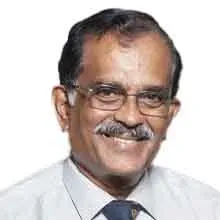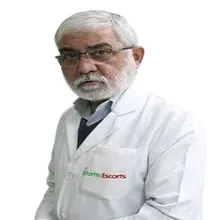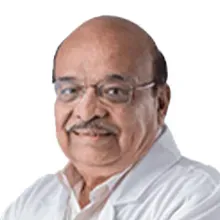Overview of Thymectomy Treatment India
Thymectomy is a procedure to remove the thymus gland, a part of the immune system. The removal of this gland has no impact on the immune system. The thymus gland is present in the front part of the chest, between breast bone and heart. It is located in the body area known as anterior mediastinum and has lobes connected to the neck. This gland is part of the bodies immune system and plays an important role in a persons early stage development. The gland keeps growing and when a human enters puberty, the gland's job is completed. After that it starts decreasing in size and fat replaces it.
This gland can cause myasthenia gravis by triggering an autoimmune reaction in it. Myasthenia gravis is a neuromuscular disease affecting the nerves and muscles that control it. It is caused due to an immune system disorder in which the body attacks the area of muscles.
Immune system defends the body from diseases. When bacteria or other foreign substances enter the body, it produces molecules called antibodies to attack bacteria. In myasthenia gravis condition, the immune system produces antibodies in large amounts that interrupt signals sent by nerves for muscles that tell when to contract or relax. This leads to muscle weakness and other signs such as blurred vision, difficulty in speaking, drooping eyelids, difficulty in swallowing and weakness in limbs.
About 10% of patients suffering from myasthenia gravis have thymoma or a tumor. This procedure is recommended to people under the age of 60 years.
Types of Thymectomy Treatment India
Types of Thymectomy
Thymectomy procedure can be performed by several surgical techniques:
01. Transsternal Thymectomy - An incision is made in the skin on the chest and is divided to get access to thymus. The thymus will be removed through this incision and fat on thymic cells will be removed as well. It is used when the patient is suffering from thymoma.
02. Transcervical Thymectomy - In this procedure, a cut is made on the lower part of the neck. The thymus will be removed without separating the sternum. It is recommended when thymine is present with certain body types.
03. VATS and Robotic Thymectomy - Both these are minimal invasive techniques with few small incisions on the chest. A camera is inserted through one of the incisions and the doctor performs surgery with the help of this. Thymus is removed with the help of special surgical tools. In Robotic thymectomy, the surgery is performed with the help of robotic arms controlled by a surgeon.
Thymectomy Procedure
Before Procedure: Before this procedure, patients will be given plasmapheresis, intravenous immunoglobulin, or immunosuppressive therapy to eliminate the risk of respiratory problems that may arise post-surgery.
During Procedure: Surgeons will choose one procedure out of three techniques of thymectomy, transsternal, transcervical, or videoscopic, depending on your condition. Doctor will inform you about the advantages and disadvantages of the procedure that the patient will undergo beforehand.
After Procedure: After surgery, the patient will wake up with breathing tubes. Depending on the overall health condition, the patient might be connected to a ventilator until the health normalizes. The hospital stay post-surgery depends on the surgical approach used. Most patients are discharged within a few days to a week.
Patients need to take prescribed medications as asked by the doctor. An improvement in symptoms after the procedure can be expected within one year of surgery.
Diagnosis of Thymectomy Treatment India
Candidates of Thymectomy
Myasthenia gravis thymectomy is recommended to all patients with thymomas with mild to moderate muscle weakness and are under 60. This procedure is more successful when performed 6 to 12 months after symptoms.
Diagnosis
Doctor will review medical history and symptoms. He or she may conduct several tests, including Neurological examination, Ice pack test, Blood analysis, Repetitive nerve stimulation, Single-fiber electromyography (EMG), Imaging and Pulmonary function tests.
01. Neurological Examination - It may include checking neurological health by testing muscle strength, reflexes, muscle tone, balance, coordination and senses of touch.
02. Ice Pack Test - If you have droopy eyelids, the doctor will place a bag full of ice on the eyelid. After two minutes, the doctor will remove it and analyze if it has improved.
03. Blood Analysis - This test is done to check abnormal antibodies that may prevent muscles from receiving signals from nerves.
04. Repetitive Nerve Stimulation - In this test, doctors attach electrodes to skin. Then small pulses of electricity are set through electrodes to check the nerves ability to send signals to muscle.
05. Single-fiber Electromyography (EMG) - It is performed to measure the electrical activity traveling from brain to muscles. In this test, a wire electrode is inserted in your skin and into muscle.
06. Imaging Tests - Doctors may recommend CT or MRI scan to check for tumor or other unusual activities in the thymus.
07. Pulmonary Function Tests - It evaluates your breathing.
Symptoms and Risk factors
Risks of Thymectomy
There are few side-effects that may arise after thymectomy. These includes:
01. Bleeding
02. Infection
03. Nerve Injury
04. Lung Injury
Thymectomy Recovery
Breathing tubes will be removed after 2 or 3 days post-surgery. Patients will be asked to breathe deeply and cough to clear the lungs. In addition to this, patients may have chest tubes, attached to drainage bottles, will also be removed on follow-up visit. There will be bearable pain after VATS or transcervical thymectomy. However, with a transsternal approach, the main problem can be more which can be controlled with pain medications. It will go away within 3 to 5 days.
Thymectomy recovery time and resuming normal routine depends on the type of surgery done and overall health condition. Generally, patients are advised to limit activities for 3 to 6 weeks. Doctor will discuss thymectomy aftercare before you are discharged.
Top Hospitals for Thymectomy in India
Shaping the future of the healthcare institution and establishing the path to accomplishment.
Top Doctors for Thymectomy in India
Empower your Health with the Expertise of Leading Medical Professionals.
Dr. R. V Jayakumar
Department of Endocrinology
Senior Consultant
Book Appointment
Dr. Ashok Sharma
Department of Endocrinology
Visiting Consultant
Book Appointment
Treatment Costs for Thymectomy
Be the change and be an opportunist in transforming healthcare.
How it's Works
Guiding your Journey from Discovery to Treatment Planning and Beyond.
Discovery
Get a consultation to discover about your treatment
Pre-Treatment
Admission to the best hospital and all pre-treatment facilities
Post Treatment
Get post-treatment follow-up care with medicine fulfillment
Treatment Planning
Hassle-free treatment planning with package & cost estimations
in-treatment
world-class quality procedures and equipment for treatment






















